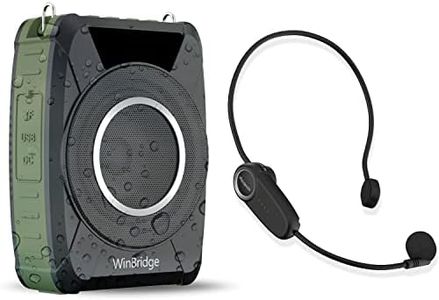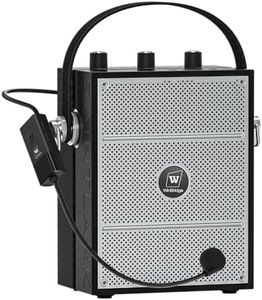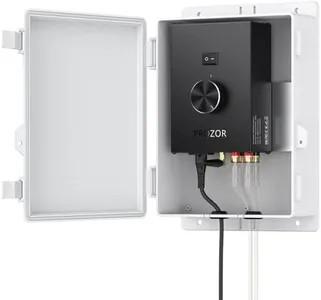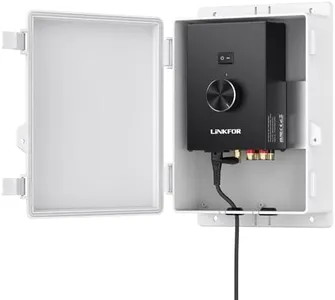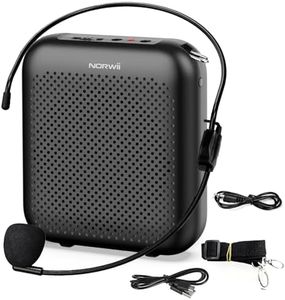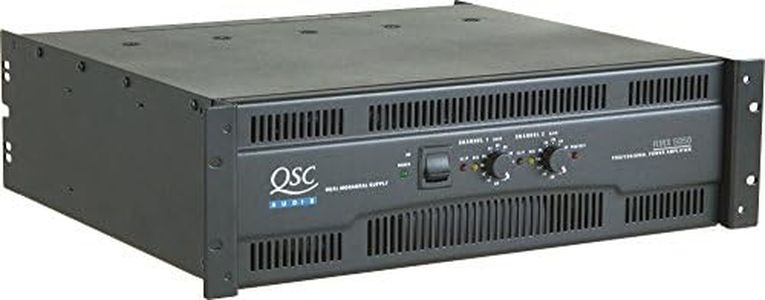10 Best Dj Amplifiers 2025 in the United States
Our technology thoroughly searches through the online shopping world, reviewing hundreds of sites. We then process and analyze this information, updating in real-time to bring you the latest top-rated products. This way, you always get the best and most current options available.

Our Top Picks
Winner
QSC RMX2450a 800 Watt 2 Channel Power Amplifier
Most important from
53 reviews
The QSC RMX2450a is a solid choice for DJs and audio professionals looking for a reliable power amplifier that delivers professional quality performance. With a power output of 800 watts across two channels, it provides strong audio support for various events, making it suitable for both small gigs and larger venues. Its high-current toroidal transformers enhance its performance at lower impedances, specifically 2 ohms, which is a definite plus for those who need extra power without compromising on sound quality. The independent clip limiters help in reducing distortion, ensuring that your sound remains clean even at higher volumes, which is crucial during live performances.
One standout feature is the selectable low-frequency filters at 30 Hz and 50 Hz, which help protect your speakers and improve sound clarity. This functionality is especially valuable for DJs who want to avoid damaging their equipment while still delivering a powerful bass response.
However, this amplifier isn't without its drawbacks. Its size (28 x 6 x 24 inches) can be cumbersome for mobile setups, and it may be less appealing for those with limited space. Additionally, while it includes various inputs like balanced 1/4 inch TRS and XLR, it lacks modern connectivity options like Bluetooth or USB, which could be a downside for some users looking for convenience. In terms of cooling, it’s designed to handle heavy use, but the cooling system specifics aren't detailed. Lastly, while the THD and SNR values are not explicitly stated in the specs, these factors are crucial for sound clarity and performance, and potential buyers may want to look for that information before making a decision. The QSC RMX2450a is a great option for dedicated DJs and audio professionals who prioritize sound quality and performance, but those needing portability or advanced connectivity might want to explore other options.
Most important from
53 reviews
Rockville RPA16 10000W Peak/3000W RMS 2-Channel Power Amplifier, Bridgeable, Built-in Crossover, Limiter, LCD Display, XLR/Speakon/Banana Outputs, for Pro Audio and DJ
Most important from
283 reviews
The Rockville RPA16 is a powerful 2-channel amplifier well-suited for DJs and live sound use, offering up to 1500 watts RMS per channel at 4 ohms and 3000 watts bridged into one channel for subwoofers. This makes it capable of driving large speaker setups with plenty of headroom. It supports 4 and 8 ohm speakers, providing flexibility depending on your speaker system. The amp maintains low distortion (less than 0.04% THD) and a high signal-to-noise ratio (over 100dB), which means your sound stays clear and free from unwanted noise during performances. Its built-in limiter and clipping indicators help protect your speakers from damage, a valuable feature for DJs who push volume levels.
The cooling system uses quiet, high-velocity fans, which effectively manage heat without adding distracting noise. Inputs are balanced with a high impedance for compatibility with professional audio gear, and the amplifier offers versatile modes (stereo, bridged, parallel) and crossover settings that help tailor output for different speaker arrangements. It also includes helpful front-panel displays showing volume and temperature, plus a rugged rack-mount design for easy integration into pro setups.
At around 41 pounds, it is a bit heavy and may not be ideal for quick, frequent transport. The size and power make it best suited for stationary or semi-permanent DJ rigs rather than portable use. The RPA16 provides strong power, solid sound quality, and useful protective features, making it a reliable choice for DJs needing a robust amplifier for club or event sound systems.
Most important from
283 reviews
Crown, 2 Two-Channel, 525W @ 4Ω Power Amplifier, Black, 525-Watts (XLS1502)
Most important from
522 reviews
The Crown XLS1502 is a solid choice for DJs or small to medium live sound setups needing reliable power and flexibility. It delivers 525 watts per channel at 4 ohms, with even higher power available at 2 ohms and bridged mode, so it can handle various speaker configurations. Its Class D design with DriveCore tech keeps it lightweight (under 9 pounds) and energy efficient, which is great if you need portable gear. The amplifier offers selectable input sensitivity and multiple input types (XLR, 1/4", RCA), making it compatible with most DJ mixers and audio sources. Its advanced DSP features, including bandpass filters and Peakx Limiters, help you tailor the sound precisely and protect your speakers from overload. The cooling system uses quiet forced-air fans to prevent overheating during long gigs, adding to reliability.
While it has good power for its size, those running very large setups might find it insufficient. The sleep mode and menu lock are thoughtful features that add convenience and security for professional environments. If you want a versatile, lightweight, and robust amplifier for DJ use with decent power and control options, the Crown XLS1502 is a fitting option. For extremely high-end sound purity or very large venues, bigger or more specialized amps might be more suitable.
